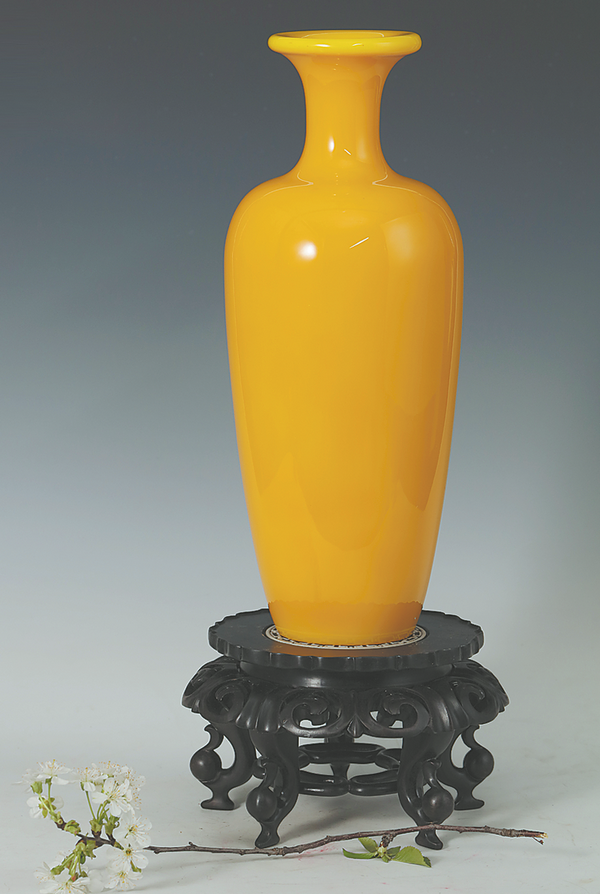

Following the annealing process, the piece is polished using grinding wheels to create a smooth surface, and then patterns are carefully engraved onto it before being filled with color.
"Each step must be executed in one continuous motion, leaving no room for error," Sun says.
He threw himself into production right after the Spring Festival holiday.
"We still have orders from last year that are yet to be delivered," he says, adding that demand for liuli is on the rise.
He and his team have also come up with new designs and forms to meet ever-changing market needs.
For the Year of the Snake, he has drawn inspiration from xuanwu, a fabled creature in ancient Chinese mythology composed of a tortoise intertwined with a snake.
He has ingeniously inset a snake figure in the belly of a tortoise after overcoming challenges such as the snake's tendency to deform or melt during secondary heating.
Sun says that as the tortoise is a symbol of longevity and endurance in Chinese culture, and the snake is often associated with regeneration and rebirth, the piece is imbued with an auspicious symbolism that makes it very popular.
Other liuli pieces, including pendants and brooches, have all been very well-received by younger consumers.
Born into a family of liuli artisans, Sun was predisposed to the art from observing his grandfather and father working amid the flames as he played with liuli marbles.
In 1983, he was making pieces at a factory, where he learned the art of painting on snuff bottles and making liuli art.
"The colored glass industry is one in which you seek wealth in the flames. The working environment is harsh. In the summer, the temperature in the workshop can exceed 40 C, and furnace workers often work shirtless, even in winter," he says.
As he built up his expertise, Sun decided to bring back the glory of jiyouhuang when his family set up their own small liuli workshop in the 1990s.